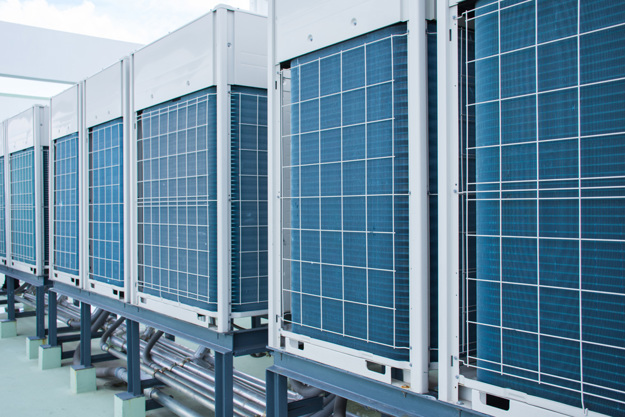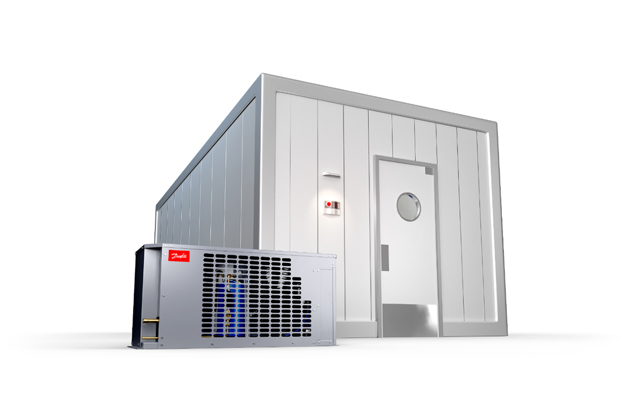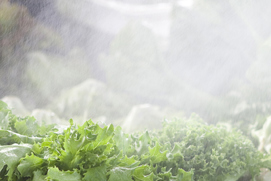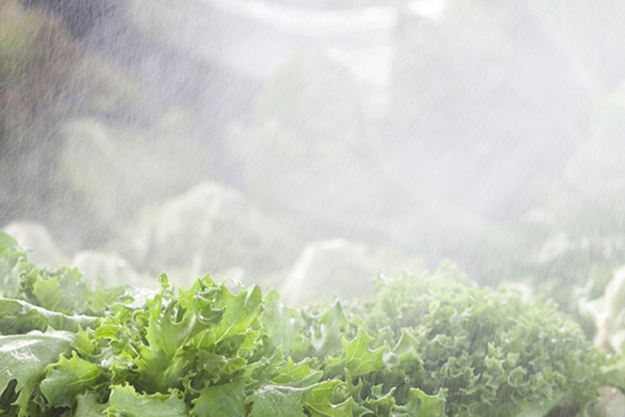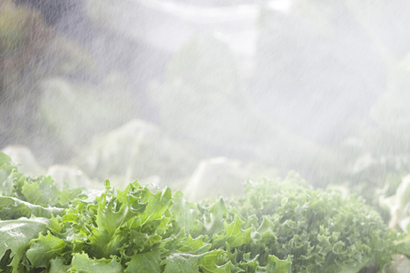Energy-efficient climate control in Vertical Farms

Energy-efficient climate control in vertical farms
Create the optimal growing conditions and achieve the highest energy efficiency in vertical farms by applying our technologies in your HVAC solution
HVAC technologies for indoor farming
To create the optimal growing conditions for your indoor farm, you need a well-designed HVAC system. One that allows you to control temperature, humidity, CO2 levels and airflow within the growing environment, while still meeting the highest standards for energy efficiency. Find out how our technologies for HVAC solutions can help you promote healthy plant growth and achieve maximum crop yield.
Let us help you navigate the HVAC solutions for indoor farming.
Key considerations when designing your vertical farm’s HVAC system
There are several factors you should consider when designing the right ventilation, heating and air conditioning system for vertical farms and controlled environment agriculture.
Heat Loads
The cooling and the heating capacity of a vertical farm is determined by the heat load – meaning the heat and humidity that needs to be removed to maintain the desired temperature and humidity. The heat load forms an important foundation for the HVAC system requirements for your vertical indoor farm or controlled environment agriculture project.
The lights and the plants contribute the most to the heat loads in indoor farming. Traditional commercial HVAC contractors often underestimate the impact of heat load from the plants, which can result in an under-dimensioned HVAC system that doesn’t meet the farm’s requirements.
Which factors impact the heat load from plants?
There following factors all impact an indoor farm’s heat load:
- The plant growth cycle
- The crop type (growth recipe)
- Day/night operation (light)
- Growth stage (LAI)
Our team of Vertical Farm HVAC professionals can support the initial Heat Load calculations for your Indoor Farming project.
Temperature control
Precise temperature control is essential for maximizing crop productivity, ensuring proper physiological functioning, managing pests and diseases, and maintaining the quality of harvested crops.
Choose an HVAC system that can maintain consistent temperatures within the desired growth zones, throughout the full growth stages of the crop, and all through outdoor seasonal changes.
Humidity control
Maintaining optimal humidity levels in indoor farming environments is essential for maximizing crop yield, quality, and overall plant health. Proper humidity control helps mitigate the risk of mold, mildew, and other diseases, ensures efficient nutrient uptake, and creates a favorable growing environment for plants.
What do I need to consider when deciding how I de-humidify my indoor farm?
Consider integrating dehumidification with your HVAC system. If you integrate dehumidification with the HVAC system, you can use energy more efficiently and control the indoor climate more precisely.
By integrating dehumidification with the HVAC system, you can achieve the following benefits:
Improved efficiency
Combining the heating, cooling and dehumidification systems allows you to optimize energy usage by harnessing waste heat generated through the cooling process and using it for dehumidification.
Consistent climate control
An integrated HVAC system gives you precise control over temperature and humidity levels throughout the indoor farming environment. You can adjust levels in real time and keep conditions stable and within the optimal ranges for plant growth. This will promote consistent crop performance and yield.
Easier maintenance
Managing dehumidification as part of the HVAC system streamlines maintenance procedures. Instead of maintaining multiple standalone units, technicians can focus on servicing a single integrated system, reducing downtime and maintenance costs.
Find out how we can help you integrate dehumidification with your HVAC system:
Energy efficiency
Since HVAC equipment accounts for 30-40% of a vertical indoor farm’s total energy usage, selecting energy-efficient HVAC equipment and design strategies can lead to considerable savings on energy and operating costs.
How can I make my farm more energy efficient?
Choosing high COP compressors, variable load control for compressors, pumps and fans, and having an appropriate hydronic balancing of your system are essential for reducing energy usage and lowering operating costs while minimizing environmental impact.
Reusing excess heat
When cooling a vertical farm using an HVAC system, excess heat is generated as a byproduct of the cooling process. This excess heat is typically dissipated to maintain the desired temperature within the growing environment. Instead of dissipating to cooling towers, the heat can be captured and reintegrated to heat office facilities, water for cleaning, or it can be fed back into the district heating grid or external users of heat.
How can I reuse excess heat?
Implement heat recovery systems to capture and reuse waste heat generated by HVAC equipment. Heat exchangers can recover thermal energy from exhaust air or refrigeration systems and use it to heat water or preheat incoming air, improving overall system efficiency.
Operational costs
While your initial focus when designing your farm is often around the initial capital expenses related to food production, you also want the farm to turn a profit. Your choice of HVAC system and components has an impact on your operational costs, such as maintenance costs, component lifetimes and energy costs.
Redundancy and maximum uptime
Designing your HVAC system for redundancy will help you minimize the risk of lost production and secure your farm’s continuous operations. To do this, you need to specify HVAC equipment with redundant components, such as multiple compressors, fans, or pumps, to minimize the impact of component failures. Redundant components can be configured to operate in parallel or standby mode, providing seamless backup in case an individual component malfunctions. You should also use remote monitoring and control systems to monitor HVAC equipment performance in real time and detect potential issues before they lead to system failures. Remote access also allows for proactive maintenance and troubleshooting, minimizing downtime and ensuring system reliability.
Refrigerants
The choice of refrigerant in HVAC systems is a critical aspect of sustainability efforts, influencing both environmental protection and energy efficiency. By selecting refrigerants with minimal environmental impact and optimizing system design and maintenance practices, HVAC systems can contribute to a more sustainable future. Find out more about refrigerants here.
FAQ - How do I choose the right HVAC system?
An HVAC system consists of a wide range of components, including air handling units, compressors, ventilation, heating and cooling equipment, and digital climate control technology. In this section, we provide some tips on what to look for when selecting the HVAC system that’s right for your indoor vertical farm or controlled environment agriculture project.
We offer technology and know-how to help you design the HVAC system that’s right for your vertical indoor farm.
Contact us
Meet our vertical farming expert

Get in touch with our vertical farming expert
Please write your question or describe your Vertical Farming needs.
Related applications
-
if (isSmallPicture) {


 Air handling units
Air handling unitsAir Handling Units should exhaust the right amount and right temperature of air at the right moments into a building. Danfoss control valves and actuators ensure the best indoor comfort established in the most energy efficient way. They accurately control the water (heated or cooled) flow into the AHU so the exhaust air temperature matches the desired temperature.
-
if (isSmallPicture) {


 Chillers
ChillersEnergy consumption is a key driver for building owners when it comes to chillers. Depending on the building size, type, and use, as well as the surrounding climate, you need different options for your chiller designs to provide the most value to your customers and differentiate yourselves in the market.
-
if (isSmallPicture) {


 Cold rooms
Cold roomsDanfoss solutions for cold rooms help keep the food fresh and safe for consumption and therefore contribute to reducing food loss and waste.
-
if (isSmallPicture) {


 Humidification
HumidificationDanfoss provides reliable and oil-free high-pressure pumps for any humidification - and adiabatic cooling systems. The pumps help to control humidity and temperature in greenhouses, supermarkets, server rooms among others.





